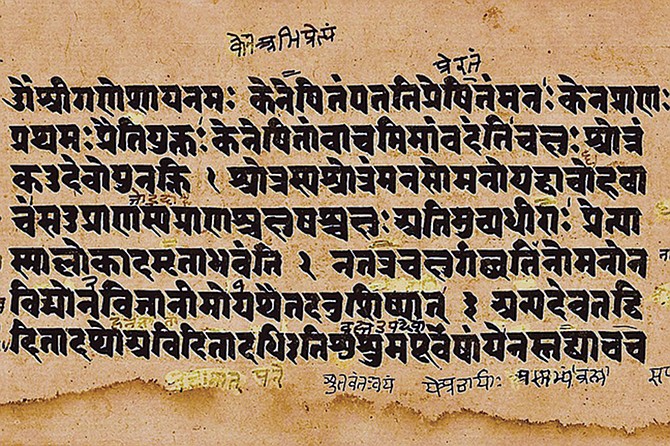 Facebook
Facebook
 X
X
 Instagram
Instagram
 TikTok
TikTok
 Youtube
Youtube

Kena Upanishad
When freed (from the senses) the wise, on departing from this world, become immortal. The eye does not go thither, nor speech, nor mind. We do not know, we do not understand, how any one can teach it. It is different from the known, it is also above the unknown, thus we have heard from those of old, who taught us this. That which is not expressed by speech and by which speech is expressed, that alone known as Brahman, not that which people here adore. That which does not think by mind, and by which, they say, mind is thought, that alone know as Brahman, not that which people here adore. That which does not see by the eye, and by which one sees (the work of) the eyes, that alone know as Brahman, not that which people here adore. That which does not hear by the ear, and by which the ear is heard, that alone know as Brahman, not that which people here adore. That which does not breathe by breath, and by which breath is drawn, that alone know as Brahman, not that which people here adore.
The Kena Upanishad (circa 1000 BC) is one of the primary ancient Sanskrit scriptures known as the Upanishads, meaning “sitting down near” – the manner in which the student learned from the master. Hinduism, Buddhism, and Jainism all derive (to a greater or lesser extent) their principles of belief from the Upanishads. The Kena Upanishad is distinguished by its focused examination of Brahman, the supreme divine being and first cause of all the gods, as both with and without attributes. These two ways of looking at Brahman are similar to the debate between Western Christian theologians, influenced by Aristotle, who reasoned to certain attributes of God, and Eastern Christian theologians, influenced by neo-Platonism, who reasoned that God was beyond anything that could be attributed to him. This account of Brahman has made the Kena Upanishad one of the principal bases of Hindu beliefs.


Kena Upanishad
When freed (from the senses) the wise, on departing from this world, become immortal. The eye does not go thither, nor speech, nor mind. We do not know, we do not understand, how any one can teach it. It is different from the known, it is also above the unknown, thus we have heard from those of old, who taught us this. That which is not expressed by speech and by which speech is expressed, that alone known as Brahman, not that which people here adore. That which does not think by mind, and by which, they say, mind is thought, that alone know as Brahman, not that which people here adore. That which does not see by the eye, and by which one sees (the work of) the eyes, that alone know as Brahman, not that which people here adore. That which does not hear by the ear, and by which the ear is heard, that alone know as Brahman, not that which people here adore. That which does not breathe by breath, and by which breath is drawn, that alone know as Brahman, not that which people here adore.
The Kena Upanishad (circa 1000 BC) is one of the primary ancient Sanskrit scriptures known as the Upanishads, meaning “sitting down near” – the manner in which the student learned from the master. Hinduism, Buddhism, and Jainism all derive (to a greater or lesser extent) their principles of belief from the Upanishads. The Kena Upanishad is distinguished by its focused examination of Brahman, the supreme divine being and first cause of all the gods, as both with and without attributes. These two ways of looking at Brahman are similar to the debate between Western Christian theologians, influenced by Aristotle, who reasoned to certain attributes of God, and Eastern Christian theologians, influenced by neo-Platonism, who reasoned that God was beyond anything that could be attributed to him. This account of Brahman has made the Kena Upanishad one of the principal bases of Hindu beliefs.
Comments